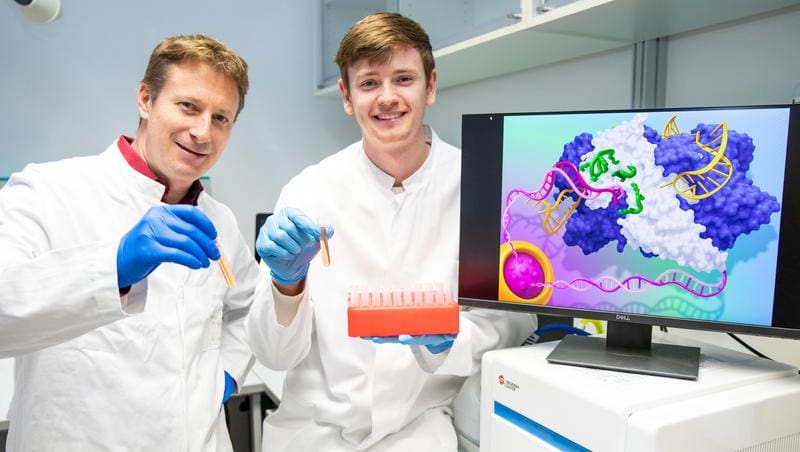Three variants of the CRISPR-Cas9 system optimized for more targeted and effective biomedical applications
An MHH research team led by Professor Dr. Tobias Cantz and Dr. Reto Eggenschwiler from the Department of Gastroenterology, Hepatology, Infectiology and Endocrinology at the Hannover Medical School (MHH) has found a way to sharpen three gene scissor variants and increase their effectiveness. This will complement the biotechnological toolbox with further functional tools. The results of the scientific study were recently published in the renowned journal “Nucleic Acids Research”.
The research team led by Dr. Reto Eggenschwiler investigated the interaction with the DNA of three of these Cas9 variants in detail and then genetically modified them in a targeted manner. “We first improved a Cas9 enzyme called iSpyMac, which can be used to target NAAN PAMs,” says Dr. Eggenschwiler. “This is important because ‘AA’ is the most abundant dinucleotide, i.e. the most common base double sequence in the human genome, and thus opens up many new possibilities for gene modification.”
More efficiency through improved interaction
Further potential for new interfaces is also offered by the improvement of the enzymes Cas9-SpRY and Cas9-SpG. Cas9-SpRY is a so-called PAM-less enzyme, which, in contrast to standard Cas9, no longer requires a strict PAM sequence. This further development makes it possible to cut and modify DNA at any point. The same applies to Cas9-SpG. This variant controls the NGNN-PAM, so it requires only a single guanine nucleotide as a recognition site on the DNA. Both variants can be used to target sites in the genome where no “traditional” NGGN PAMs are available, which significantly expands the flexibility of CRISPR/Cas9 technology. “With the help of AI-generated 3D models and high-performance computer simulations, we were able to identify the corresponding important structural areas in the Cas9 variants,” explains the molecular biologist. “We then specifically modified the enzymes in such a way that their interaction with the DNA could be increased by up to four times at some target sites.” The improved variants now allow more effective genetic changes across the entire genome.

Goal: to treat inherited gene mutation
With the help of these new enzymes, the researchers now want to repair an inherited gene mutation that causes the so-called alpha-1 antitrypsin deficiency. In this disease, the body lacks a protective protein, which damages the lungs and liver. “We want to be able to replace this one faulty base with the correct variant,” says Mika Opitz, research associate and co-author of the study. If this succeeds, it would be a further step towards a permanent cure for the serious disease, which requires a lung or liver transplant in the final stage.
Original Paper:
Editor: X-Press Journalistenb├╝ro GbR
Gender Notice. The personal designations used in this text always refer equally to female, male and diverse persons. Double/triple naming and gendered designations are used for better readability. ected.




